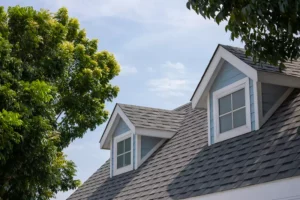
The https://ecosoberhouse.com/ emphasis is on developing personal accountability and rebuilding one’s life in a substance-free environment. Residents are encouraged to support each other in their recovery journeys, creating a sense of community and shared responsibility. Both sober living houses and halfway houses offer invaluable support for individuals in recovery.
- Regardless of where you are in your sobriety journey, Silver Ridge Recovery can help.
- This setting ensures a supportive network is consistently available, thereby enhancing the individual’s ability to maintain sober living for enduring recovery, even as they navigate the challenges of everyday life.
- Living in a sober environment helps you develop new habits and routines, taking what you learned during drug or alcohol rehab and applying it in your daily life.
- Halfway houses are residential facilities that provide transitional living arrangements for individuals recovering from addiction, as well as those who are reentering society from incarceration.
- RECO Institute is deeply committed to offering a transitional housing program that not only meets but exceeds the expectations and needs of individuals at various stages of recovery.
- These facilities are designed to re-integrate individuals into society safely and effectively.
Peer Support and Community Engagement
These rules are in place to introduce discipline and regularity in the lives of individuals coming from an environment of intensive treatment or incarceration. How halfway houses function includes close monitoring and tight regulations to help individuals reintegrate into society effectively. Each component of the daily routine is structured to minimize the risk of relapse while maximizing the opportunity for rehabilitation and successful societal reintegration.
Insurance Providers
Permanent Supportive Housing is an alternative for people sober house vs halfway house who have been homeless for a long time (PSH). It can take several forms, ranging from a single room in a house to a number of or all of the units in a structure. Frequent drug testing ensures compliance with this cardinal rule, providing another layer of accountability within these shared living spaces. This arrangement promotes community interaction and individual solitude when needed, creating an environment conducive to reflection and encouraging mutual support.
What’s the Difference: Sober Living vs Halfway House

These components are vital for maintaining sobriety in transitional housing and ensuring that the recovery process is anchored in a real-world context. Opting for a sober living environment in Delray Beach provides access to a wide-ranging sober network, including recovery-focused events, meetings, and peer support groups. This sense of community can serve as a powerful motivator and supportive framework, ensuring that individuals don’t navigate the complexities of recovery alone. Furthermore, the choice of location can influence daily life, from ease of access to employment opportunities to engaging in healthy leisure activities, all within a supportive, substance-free environment.
- After you, complete inpatient drug or alcohol rehab, your counselors and medical team will meet with you to discuss what’s next.
- This level offers life-skill-oriented programming in-house or in cooperation with other service providers.
- Transitional housing for individuals recovering from substance use disorders, such as sober living homes and halfway houses, plays a critical role in stabilizing the journey toward sustained sobriety.
The expense is another significant distinction between sober living and halfway houses. Because they often have fewer facilities, less privacy, and less structure, halfway homes are the less expensive option. However, insurance may cover sober living, making it a practical choice for those who might benefit from this degree of assistance. Sober living homes prioritize fostering personal responsibility and self-reliance, while halfway houses emphasize legal compliance and reintegration into society. A supportive living environment is essential for attaining and sustaining sobriety and personal development. Leading St. Louis drug rehab center Harris House offers two levels of transitional housing designed to provide ongoing and progressive alcohol and substance dependency skills.

There are specific differences that distinguish sober living houses and halfway houses. Institutions like RECO Institute work closely with residents to create a seamless transition from structured living to more autonomous living environments. This often involves helping residents find suitable employment, connect with educational opportunities, and secure permanent housing. The ongoing support doesn’t end with physical relocation; alum programs and follow-up care play essential roles in providing a safety net during this transition phase. The process of verifying information and submitting necessary documentation plays a critical role in securing a position in either sober living or halfway house facilities.
Hope for Recovery is Alive!

Unlike halfway homes, sober living homes don’t typically require that residents have been incarcerated. They also may not require that housemates be enrolled in treatment plans while living there. Here’s a closer look at these two different resources for people in addiction recovery. Palisades house is a coed residence, and the Barrington house only hosts male residents. You can choose between the two based on the convenience of the location and the type of patients admitted to the residence. We have staff waiting to help you start your transition to living a healthy life today.
Support for Me and My Family
These recovery residences are commonly known as sober homes and are most often found in single-family residences. Oversight of residents is peer-based within the home; residents are self-monitoring and accountable to each other. The primary criterion for this living environment is a willingness to be abstinent from mood-altering substances. Self-help (e.g., 12-step) meetings and outside recovery support services are encouraged or required. Weekly house meetings are a standard component, where chores and overall house functioning are processed within the community.
Que: What Is the Success Rate of Each Type of Facility?
Our sober living home in Loveland, Colorado, offers a supportive, community-oriented environment designed to help you build a strong foundation for long-term sobriety. With an emphasis on peer support and access to a wide range of external recovery resources, we provide the flexibility and encouragement you need to succeed in your recovery journey. Our structured yet flexible approach ensures that you can develop the skills and confidence necessary for independent living.
Caring For: Wildomar, California 92595 Riverside County with Halfway Houses, Call: 1-888-737-0761
This article aims to clarify the distinctions between sober living homes and halfway houses, providing you with a comprehensive understanding of both options. We will explore the key characteristics and primary goals of each type of housing, as well as their similarities. By the end of this article, you will have the knowledge needed to make a well-informed decision about which post-rehab housing option best suits your individual recovery journey. Choosing between a sober living home and a halfway house depends on where an individual is in their recovery journey. For those who are transitioning from a state-run program or incarceration, halfway houses may be the ideal choice.